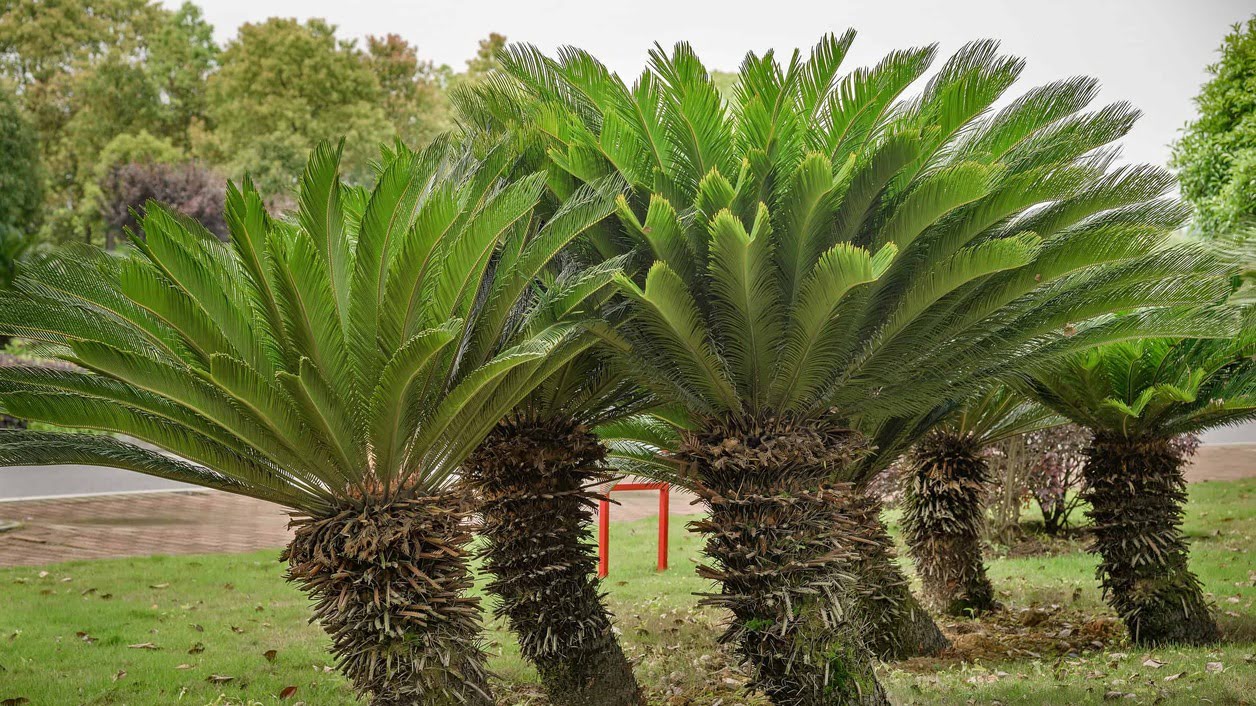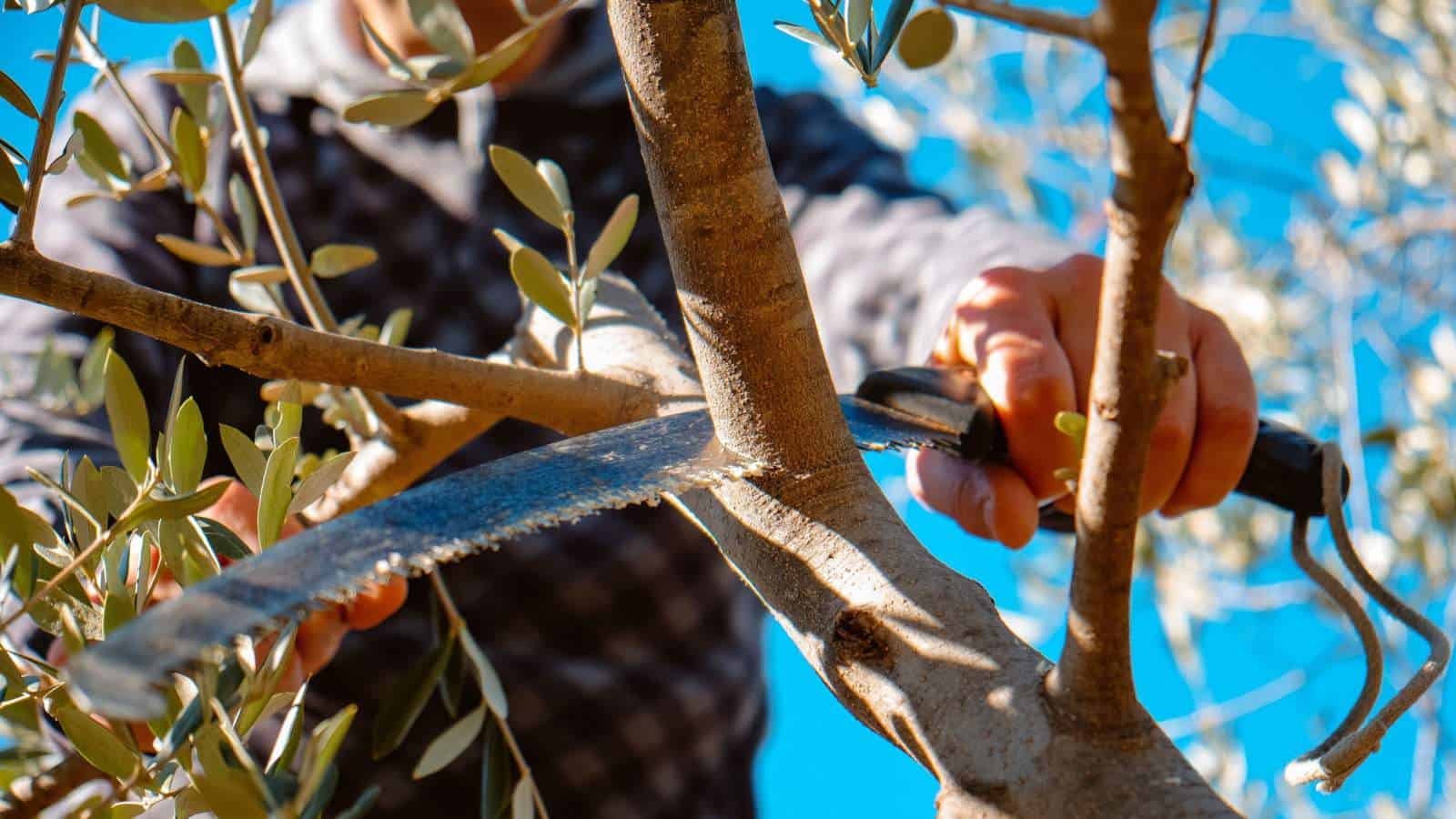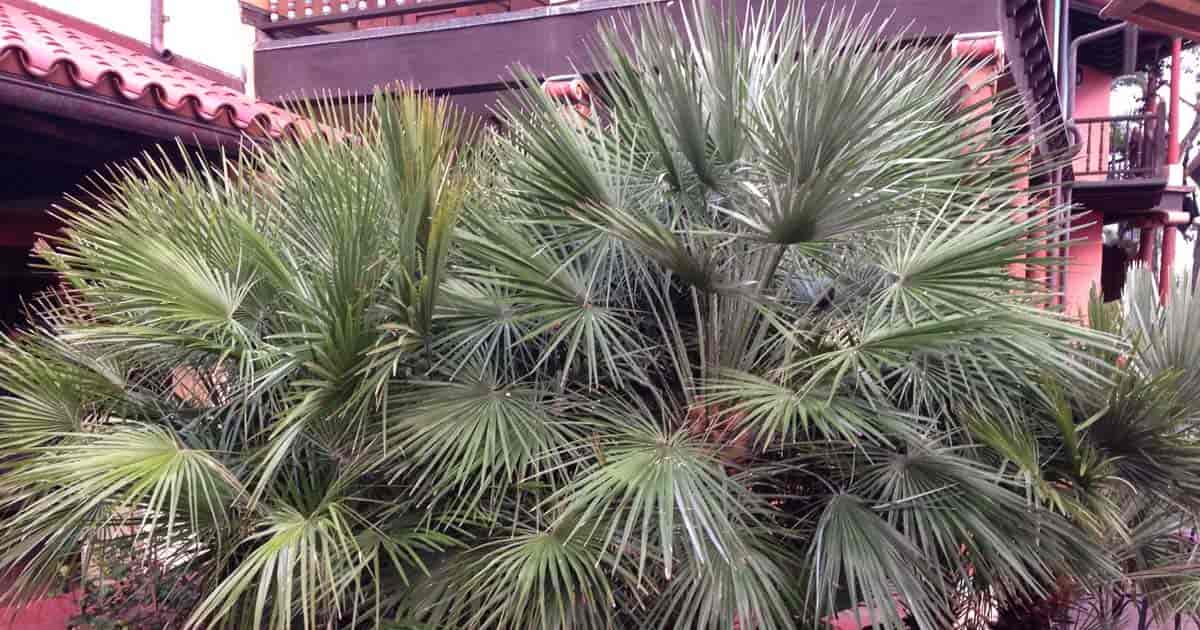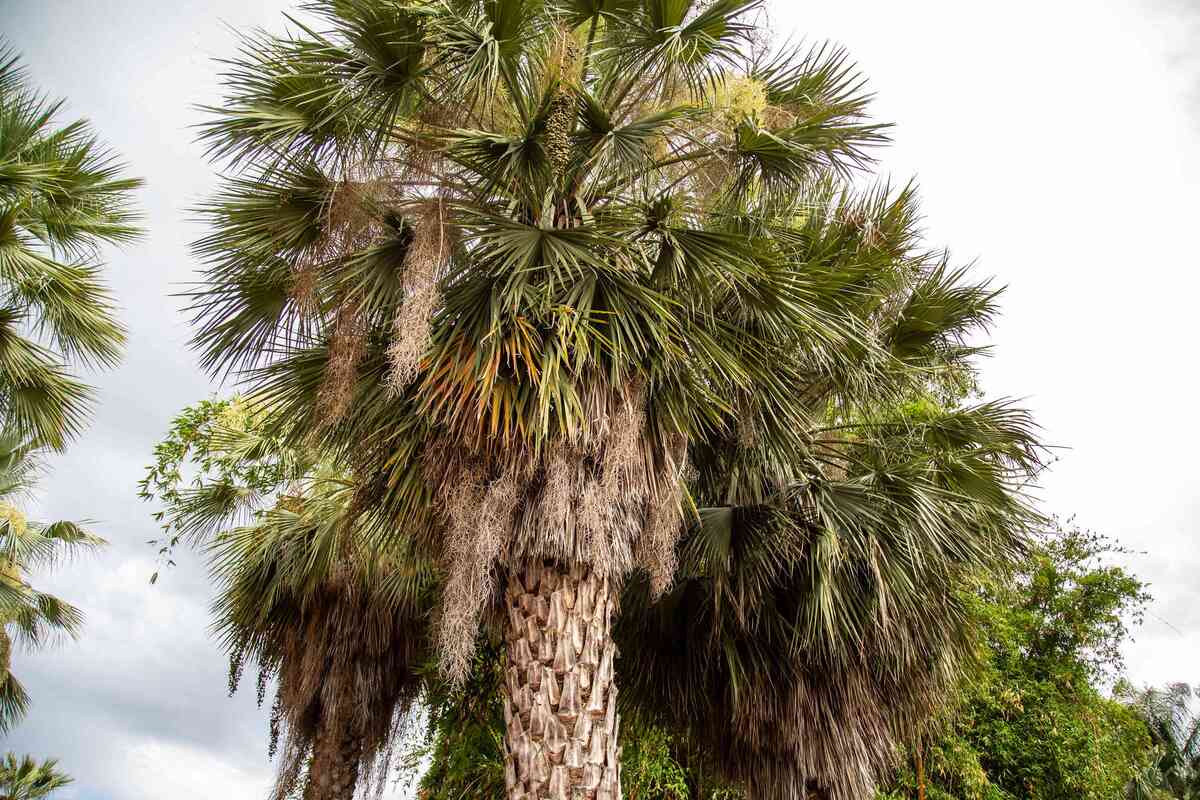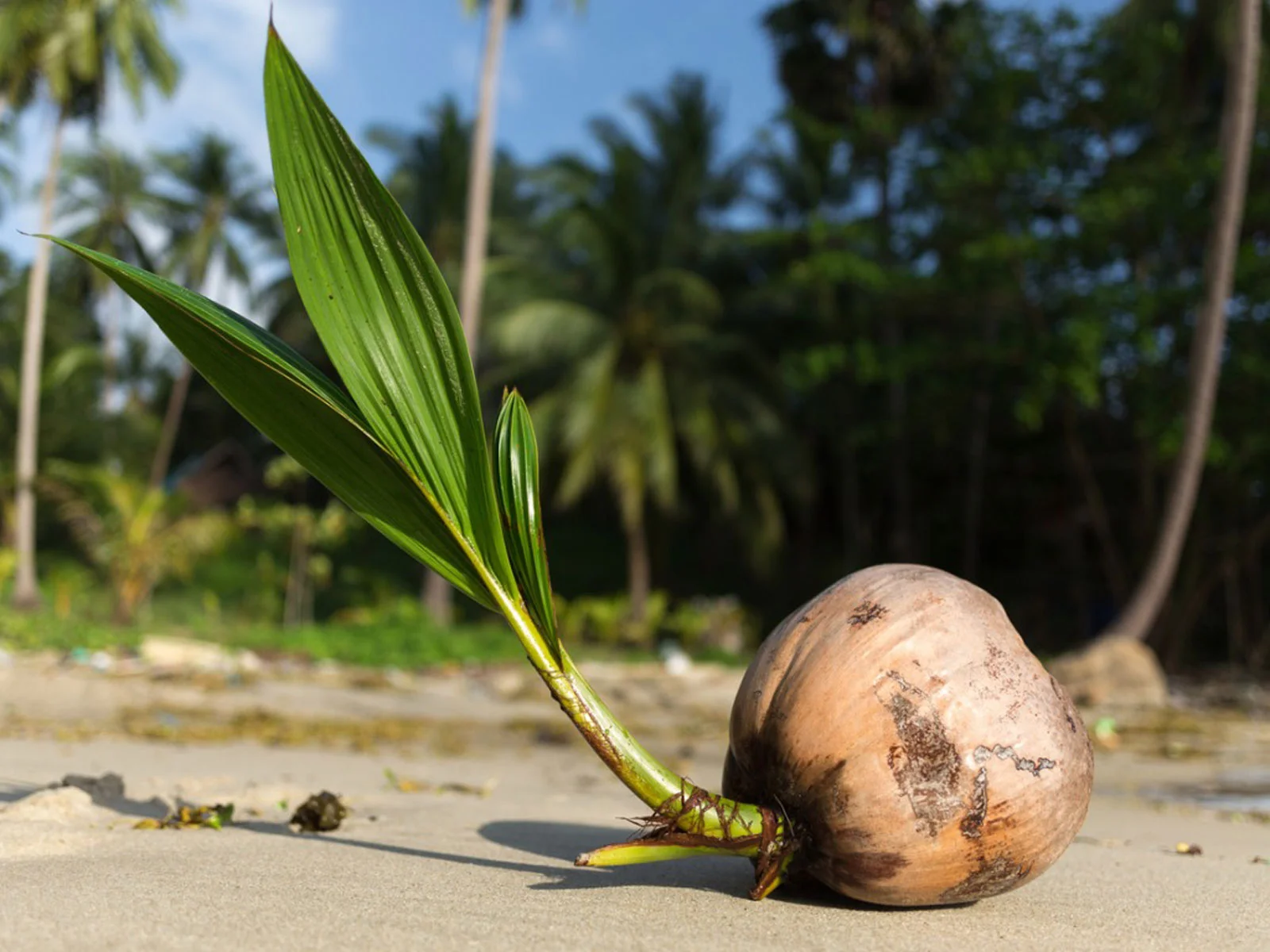Home>Gardening Techniques>Plant Care>How Do You Trim Palm Trees
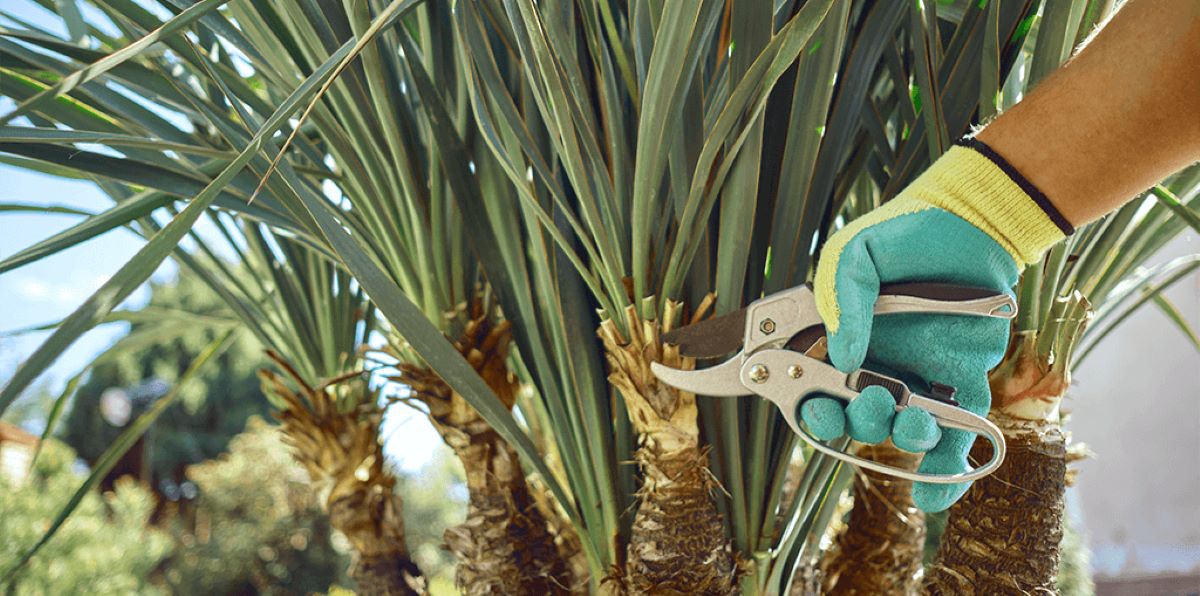

Plant Care
How Do You Trim Palm Trees
Published: October 28, 2023
Learn how to trim palm trees with proper plant care techniques. Find out step-by-step instructions for maintaining the health and aesthetic appeal of your palm trees.
(Many of the links in this article redirect to a specific reviewed product. Your purchase of these products through affiliate links helps to generate commission for Chicagolandgardening.com, at no extra cost. Learn more)
Table of Contents
Introduction
Welcome to the world of palm trees! These majestic and iconic plants are known for their striking appearance and tropical vibes. If you’re lucky enough to have palm trees in your garden or yard, it’s essential to understand the importance of proper maintenance, including regular trimming.
Trimming palm trees not only enhances their overall appearance but also promotes healthy growth and reduces the risk of damage caused by overgrowth. It is a crucial aspect of plant care that should not be overlooked.
From maintaining the tree’s aesthetic appeal to ensuring its structural integrity, trimming plays a vital role in the overall health and longevity of palm trees. It involves the removal of dead or diseased fronds, as well as suckers or offshoots that can divert essential nutrients from the main trunk.
In this comprehensive guide, we will discuss the importance of trimming palm trees, the ideal time to trim them, the essential tools you’ll need, and provide a step-by-step guide to help you effectively trim your palm trees. We will also share some useful tips, safety precautions, and common mistakes to avoid during the trimming process.
So, if you’re ready to dive into the world of palm tree care and learn how to trim them like a pro, let’s get started!
Importance of Trimming Palm Trees
Trimming palm trees is not just about maintaining their beautiful appearance; it is a crucial part of their overall health and well-being. Here are some key reasons why regular trimming is essential:
- Promotes Healthy Growth: Regular trimming helps stimulate new growth in palm trees. By removing dead or dying fronds, the tree can allocate its resources more efficiently and direct them towards healthy foliage and stronger roots.
- Prevents Disease and Infestation: Overgrown palm trees can provide a perfect habitat for pests, such as mites or beetles, as well as fungal or bacterial diseases. Trimming helps eliminate potential breeding grounds and reduces the risk of infestation or infection.
- Enhances Aesthetic Appeal: Trimmed palm trees look more visually appealing. By removing dead or unsightly fronds, you can maintain a neat and tidy appearance in your garden or landscape, elevating its overall aesthetics.
- Reduces Hazards: Overgrown palm trees pose a safety risk. Dead or heavily weighted fronds can fall unexpectedly, potentially causing damage to property or harm to people passing by. Regular trimming minimizes this risk and creates a safer environment.
- Improves Air Circulation: Dense palm tree canopies can hinder proper air circulation, leading to increased humidity and the potential for fungal growth. Trimming allows for better ventilation, reducing the risk of diseases and improving the overall health of the tree.
By understanding the importance of trimming palm trees, you can ensure that your trees thrive and remain in optimal condition. Regular trimming not only benefits the tree itself but also contributes to the beauty and safety of your outdoor space.
When to Trim Palm Trees
Timing is crucial when it comes to trimming palm trees. Trimming at the right time ensures that you don’t harm the tree and maximizes the benefits of the pruning process. Here are some guidelines to help you determine the ideal time for trimming:
- Spring: Spring is generally considered the best time to trim palm trees. During this season, the trees are actively growing, and trimming encourages healthy new growth. It is also easier to identify dead or damaged fronds when the tree is in full growth mode.
- After Frost: If your region experiences frost, it’s important to wait until after the last frost before trimming palm trees. Frost can damage the fronds, and trimming immediately after can lead to further harm. Give the tree some time to recover before pruning.
- Before Hurricane Season: If you live in an area prone to hurricanes or strong winds, it’s a good idea to trim your palm trees before the start of the hurricane season. Removing any dead or weak fronds reduces the risk of them becoming projectiles during strong winds.
- Throughout the Year: While spring is the optimal time for trimming, there are situations where you may need to prune palm trees at other times of the year. For example, if you notice dead or diseased fronds, it’s important to remove them as soon as possible, regardless of the season.
It’s important to note that palm trees should not be overtrimmed. Removing too many fronds at once can stress the tree and inhibit its growth. Aim to remove only the dead, dying, or damaged fronds during each trimming session. Consult with a professional arborist if you’re unsure about the proper trimming techniques.
By following these guidelines, you can ensure that you trim your palm trees at the most opportune time, promoting their health and vitality.
Tools Required for Trimming Palm Trees
Trimming palm trees requires the use of specific tools designed to make the process efficient and safe. Having the right tools on hand will ensure that you can effectively maintain your palm trees. Here are some essential tools you’ll need for trimming palm trees:
- Pole Pruner: A pole pruner is a long-handled pruning tool with a bypass or anvil-style cutting mechanism at the end. It allows you to reach high branches and trim palm fronds without the need for a ladder.
- Lopper: A lopper is a larger and more robust cutting tool used for thicker branches. It has long handles and a bypass or anvil cutting mechanism. Loppers are ideal for removing larger dead or diseased fronds on palm trees.
- Hand Pruners: Hand pruners, also known as secateurs, are small-sized pruning tools used for cutting thinner branches or smaller fronds. They are perfect for precise trimming and shaping palm trees.
- Pruning Saw: A pruning saw is necessary for removing larger branches or thicker portions of palm fronds. It has a curved or straight blade with sharp teeth designed to cut through tough palm tree materials.
- Safety Gear: It’s important to prioritize your safety while trimming palm trees. Make sure you have sturdy gloves to protect your hands, safety goggles to shield your eyes from debris, and a hard hat to protect your head from falling fronds.
- Ladder: While ideally, you’ll use a pole pruner to avoid the need for a ladder, there may be situations where a ladder is necessary, especially for shorter palm trees. Make sure you have a stable ladder that’s appropriate for tree trimming.
- Rope and Harness (Optional): For taller palm trees, you may want to consider using a rope or harness to secure yourself while trimming. This provides an extra layer of safety and stability when working at heights.
Having these tools readily available before you start trimming will make the process smoother and more efficient. Proper maintenance and occasional sharpening of the cutting edges will also ensure that your tools remain in good condition for long-term use.
Step-by-Step Guide for Trimming Palm Trees
Trimming palm trees can be a straightforward process if done correctly. Follow this step-by-step guide to effectively trim your palm trees:
- Assess the Tree: Before you begin trimming, take a close look at the palm tree to identify any dead or diseased fronds. These are the ones you’ll want to remove.
- Gather Your Tools: Make sure you have all the necessary tools and safety gear mentioned earlier. Check that they are in good working condition.
- Start from the Bottom: Begin trimming from the lower portion of the palm tree, working your way up. Use the pole pruner or hand pruners to remove any dead or yellowing fronds by cutting them close to the base of the tree.
- Be Mindful of the Canopy: As you trim, pay attention to the shape of the palm tree’s canopy. Aim for a slight V-shape, with the center frond being the tallest.
- Remove Suckers: Look for any suckers or offshoots growing near the base of the palm tree. These divert valuable nutrients from the main trunk and should be carefully removed.
- Use a Pruning Saw for Larger Branches: If you encounter thicker branches that cannot be easily cut with a pruner, switch to a pruning saw. Make clean cuts, avoiding any jagged edges.
- Step Back and Assess: Periodically step back to assess your progress. Ensure the tree has a balanced appearance and remove any additional dead or unsightly fronds as needed.
- Dispose of Trimmed Debris: Collect all the trimmed fronds and fallen debris and dispose of them properly. You can use them for mulch or contact your local waste disposal service for guidance.
- Clean and Maintain Your Tools: After trimming, clean and sanitize your tools to prevent the spread of diseases. Keep them in a clean and dry place for future use.
Remember, it’s essential not to overtrim palm trees. Removing too many fronds at once can stress the tree and slow down its growth. Aim to remove only the dead, dying, or damaged fronds during each trimming session.
Finally, if you feel unsure or uncomfortable with trimming your palm trees, it’s always advisable to consult a professional arborist who can provide expert guidance and assistance.
Tips for Trimming Palm Trees Effectively
To ensure a successful and efficient palm tree trimming process, consider the following tips:
- Know Your Palm Tree Species: Different palm tree species have specific pruning requirements. Familiarize yourself with the particular needs of your palm tree to ensure you trim it correctly.
- Avoid Overtrimming: As mentioned earlier, be mindful not to overtrim your palm trees. Removing too many fronds can weaken the tree and slow down its growth. Trim only the dead, dying, or damaged fronds.
- Sharpen Your Tools: Sharp pruning tools make the trimming process easier and more precise. Regularly sharpen the cutting edges of your tools to ensure clean cuts and minimal stress on the tree.
- Don’t Leave Stubs: When trimming fronds, make sure to remove them as close to the base of the tree as possible. Avoid leaving stubs, as they can become entry points for pests and diseases.
- Protect Yourself: Always prioritize your safety while trimming palm trees. Wear sturdy gloves, safety goggles, and a hard hat. If necessary, use a harness or rope for added stability when working at heights.
- Prune After Rain: It’s beneficial to trim palm trees a day or two after a rainfall. The moisture helps reduce dust and makes the pruning process more manageable.
- Take Breaks: Trimming palm trees can be physically demanding. Take regular breaks to rest and hydrate, especially if you have a large number of palm trees to trim.
- Consult a Professional: If you’re uncertain about trimming your palm trees or if you have tall or hard-to-reach trees, it’s best to consult a professional arborist. They have the expertise and experience to trim your palms safely and effectively.
By following these tips, you’ll be well-equipped to trim your palm trees effectively, promoting their health and maintaining their aesthetic appeal.
Safety Precautions While Trimming Palm Trees
Trimming palm trees can be a rewarding task, but it’s important to prioritize safety to avoid accidents or injuries. Follow these safety precautions while trimming palm trees:
- Use Safety Gear: Always wear appropriate safety gear, including sturdy gloves, safety goggles, and a hard hat. This will protect you from potential hazards, such as falling fronds or debris.
- Inspect Your Tools: Before starting, ensure that your trimming tools are in good working condition. Check for any loose or damaged parts that may cause accidents during the trimming process.
- Secure Yourself: If you need to trim tall palm trees, consider securing yourself with a rope or harness. This provides additional stability and prevents falls while working at heights.
- Be Mindful of Power Lines: When trimming palm trees, be aware of nearby power lines. Keep a safe distance from them to avoid potential electrocution hazards. If the tree is in close proximity to power lines, it’s best to hire a professional for the job.
- Use Caution on Uneven Ground: Be cautious when trimming palm trees on uneven or sloped ground. Ensure that your footing is secure and stable to prevent slips or falls.
- Inspect the Tree: Before starting the trimming process, thoroughly inspect the palm tree for potential hazards, such as wildlife nests or hives. Remove these obstructions safely before beginning trimming.
- Stay Alert and Focused: Trim palm trees when you’re well-rested and focused. Avoid distractions and stay alert throughout the process to minimize the risk of accidents.
- Do Not Trim During Storms: Never attempt to trim palm trees during severe weather conditions, such as storms or high winds. Wait for suitable weather conditions to ensure your safety.
- Do Not Overreach: When using pole pruners or loppers, avoid overreaching or extending your tools beyond their recommended reach. This can cause loss of balance or control, leading to accidents.
- Know Your Limits: If you’re uncomfortable or unsure about trimming palm trees, it’s best to seek professional help. Trained arborists have the expertise and proper equipment to handle the task safely.
Remember, safety should always be your top priority when trimming palm trees. By following these precautions, you can enjoy a safe and successful trimming process.
Common Mistakes to Avoid While Trimming Palm Trees
When trimming palm trees, it’s important to be aware of and avoid common mistakes that can harm the tree or compromise your safety. Here are some common mistakes to steer clear of:
- Overtrimming: Removing too many fronds at once can stress the palm tree and hinder its growth. Avoid overtrimming and focus on removing only dead, dying, or damaged fronds.
- Leaving Stub Cuts: Leaving stub cuts or snags on the tree after trimming can create entry points for pests and diseases. Always make clean cuts as close to the base of the tree as possible.
- Trimming Too High: Avoid trimming too high up the trunk as this can cause unnecessary stress to the tree. Trim only the low-hanging fronds or those that pose a safety risk.
- Using Dull Tools: Working with dull pruning tools can result in jagged cuts, making it harder for the palm tree to heal. Keep your tools sharp and well-maintained for clean and precise cuts.
- Trimming During Unsuitable Weather: Trimming palm trees during storms, periods of high wind, or extreme heat is not advisable. Wait for suitable weather conditions to ensure safety and optimal tree health.
- Ignoring Safety Precautions: Failing to wear proper safety gear, neglecting to secure yourself when trimming tall palm trees, or not being mindful of nearby power lines can lead to accidents or injuries. Always prioritize safety precautions.
- Improper Disposal of Trimmings: Failing to properly dispose of trimmed fronds and debris can create a messy and potentially hazardous environment. Follow local guidelines for disposal or consider using the trimmed fronds as mulch.
- Not Knowing the Palm Tree Species: Each palm tree species has unique pruning requirements. Lack of knowledge about your specific palm tree’s needs can result in improper trimming practices. Research or consult an expert to understand the specific requirements for your palm tree.
- Attempting Challenging Trimming Tasks: Trimming tall and hard-to-reach palm trees without the necessary equipment or expertise can be dangerous. Avoid attempting challenging trimming tasks beyond your capabilities and seek professional help if needed.
- Not Seeking Professional Help: If you’re uncertain about any aspect of trimming your palm trees or if you have large or complex trees, it’s best to consult a professional arborist. They have the knowledge and experience to ensure proper trimming and maintain tree health.
Avoiding these common mistakes will help you maintain the health and beauty of your palm trees and also contribute to a safe and successful trimming process.
Conclusion
Trimming palm trees is a vital aspect of plant care that contributes to their overall health, appearance, and safety. By understanding the importance of regular trimming, knowing when to trim, having the right tools, and following proper techniques, you can effectively maintain your palm trees.
Trimming palm trees promotes healthy growth, prevents diseases and infestations, enhances their aesthetic appeal, reduces hazards, and improves air circulation. It’s essential to trim palm trees at the appropriate time, such as in spring or after frost, and to avoid overtrimming, which can stress the tree.
Having the right tools for trimming, including pole pruners, loppers, hand pruners, pruning saws, and safety gear, ensures that the process is efficient and safe. Following a step-by-step guide, inspecting the tree, and disposing of trimmings properly are all integral parts of successful palm tree trimming.
Remember to prioritize safety by using appropriate safety gear, inspecting tools before use, securing yourself when working at heights, and being mindful of power lines. Additionally, avoiding common mistakes like overtrimming, leaving stub cuts, and neglecting safety precautions is crucial for maintaining the health and well-being of your palm trees.
If you’re unsure about trimming or have tall or complex palm trees, it’s always a good idea to consult a professional arborist who can provide expert guidance and assistance.
So, with these insights and tips in mind, you’re ready to embark on your journey of trimming palm trees effectively, ensuring their continued beauty and vitality.
